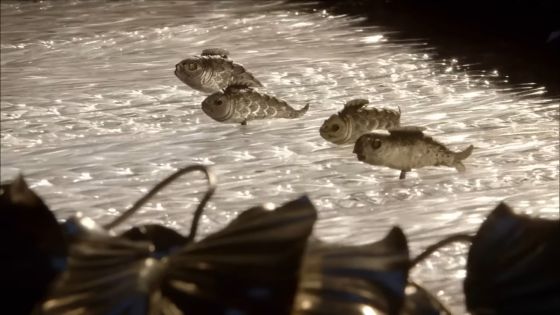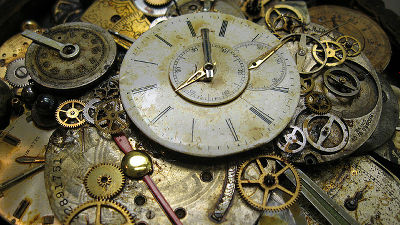History of amazingly skilled automata such as ``automatic writing dolls that write sentences as specified'' and ``swans that eat fish on the surface of the water''

In Japan, karakuri dolls such as
Automata: The Extraordinary 'Robots' Designed Hundreds Of Years Ago | Mechanical Marvels | Timeline - YouTube
In medieval Europe, time became important in order to maintain order in the city. Many large clock towers were built to share the same sense of time throughout the city.

The inside of the clock tower looks like this. The clock is powered by a large pendulum, spring, string, etc.

As the production technology for clock towers improved, the development of automata that utilized clockwork became active.

The photo below shows an automaton installed in the garden of

This is what it looks like when humans line up side by side. You can see that it's a very large scale setup.

In the 18th century, advances in miniaturization technology for springs, screws, etc. led to the creation of automatons with driving parts packed into compact bodies. For example, the insect-like automaton shown below has the ability to move forward while moving its wings.

Contents is like this.

The automaton below reproduces the appearance of a tiny bird flapping its wings at high speed.

Furthermore, the development of the ``

Among the automata that made full use of the cam mechanism, the ``lighter'' created by

Writers could write sentences by moving their hands holding a pen.

The content of the text can be freely specified by fitting the 'parts for specifying characters' into the disk parts below.

Another major feature is that all the mechanisms are packed into a body that is about the size of a child's body while achieving extremely precise movements.

Below is a silver swan automaton created by inventor John Joseph Merlin.

By rotating the long, thin silver parts, it reproduces the shine that resembles the surface of water.

The swan's neck moves smoothly and holds the fish in its mouth.

The following is a reproduction of the automaton ``Turk'', which gained great popularity due to its ``

The Turk's approach of ``mechanizing extremely complex movements'' had a great impact on engineers at the time, and is said to have been the motivation for

However, it was later revealed that the true mechanism of the Turks was that ``a human being lurks inside and operates the arm.''

Related Posts:
in Video, Posted by log1o_hf







